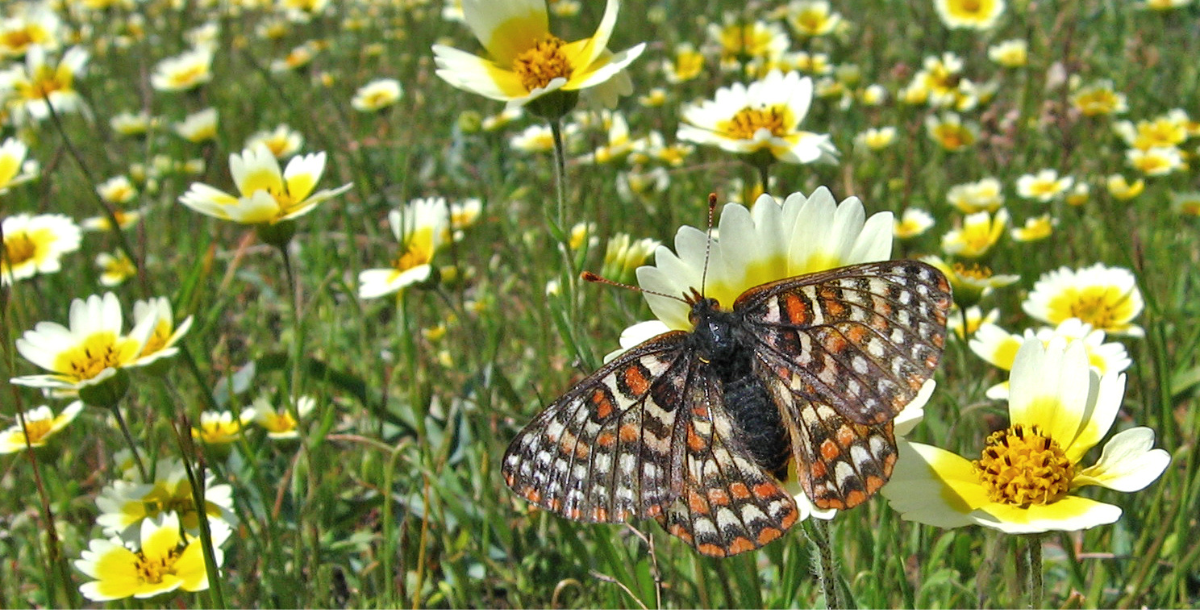When wildflowers bloom, hills and fields become blanketed with vibrant colors and bring new life into the ecosystem. This new life comes in the form of native pollinators feasting on the wildflower nectar. One of these important creatures is the Bay checkerspot butterfly (Euphydryas editha bayensis), a federally threatened species that is the focus of ongoing research at Máyyan ‘Ooyákma – Coyote Ridge Open Space Preserve. Keep reading to learn all about their habitat, diet, lifecycle and conservation efforts to protect them!
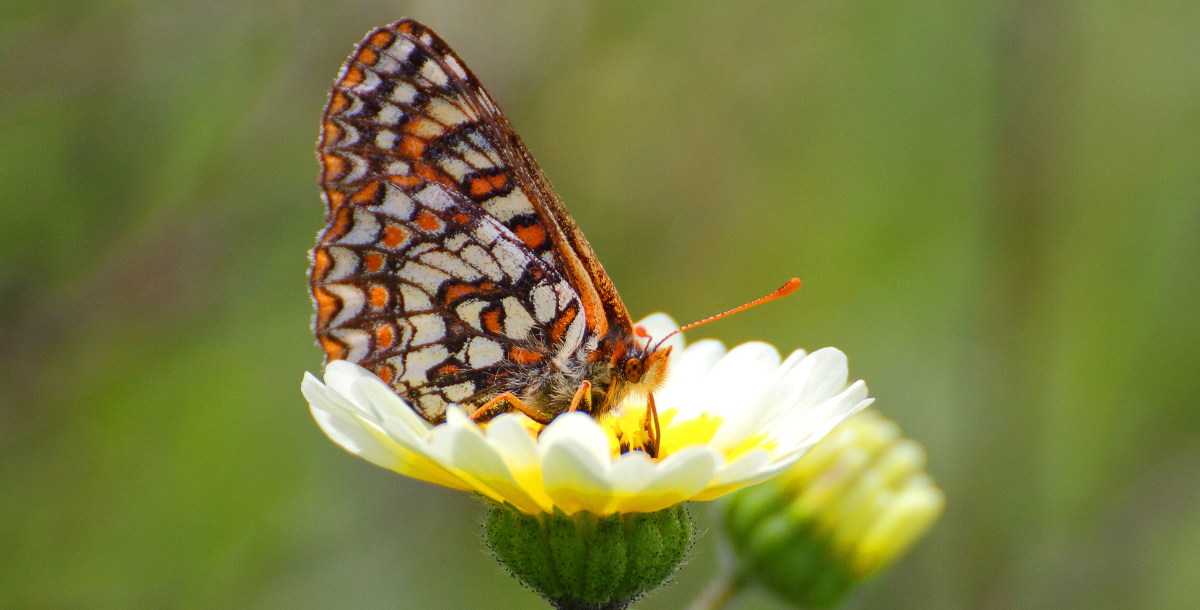
Why is the Bay checkerspot butterfly special?
The Bay checkerspot butterfly is a medium-sized butterfly with a wingspan of about two inches. Its name comes from the black bands along the veins of its wings that contrast with its bright red, white and yellow spots. Checkerboard plus spots!
The Bay checkerspot butterfly is endemic to the San Francisco Bay Area, meaning it can only be found here! With a lifecycle dependent on plants only found in rare serpentine habitats, it is important that we take extra precautions to protect the few habitats where we can still find the butterflies.
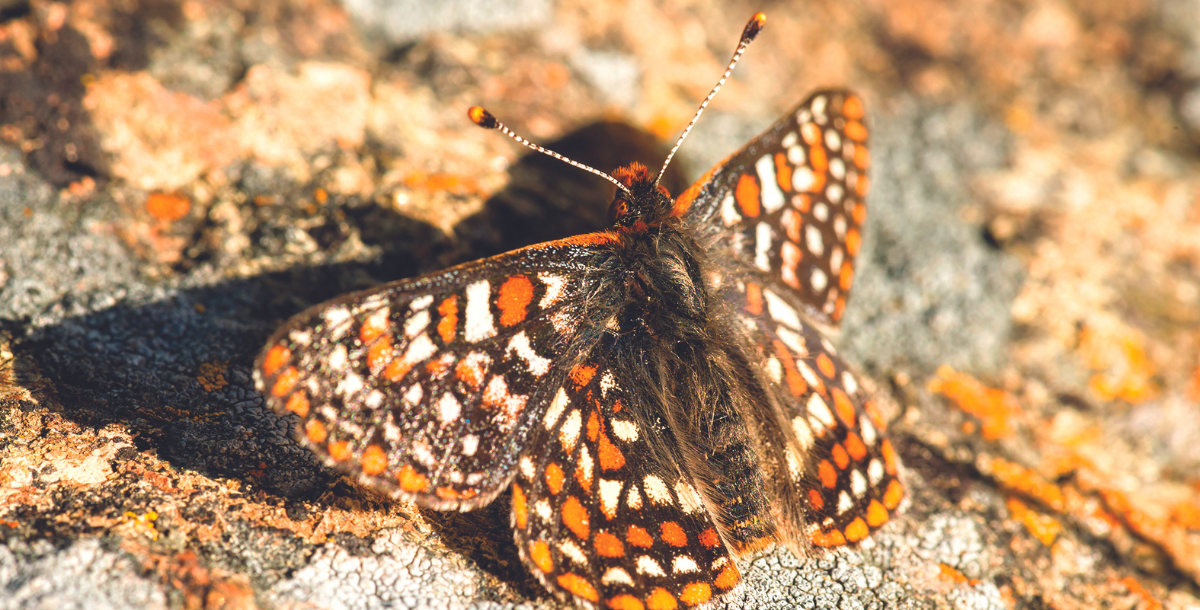
Where do Bay checkerspots live?
Originally covering the Bay Area from the San Bruno Mountain range to the Diablo Mountain range and all the way down to the Coyote Reservoir, the Bay checkerspot’s habitat has greatly diminished. There are now only four or five core populations of the species, all of which are found in San Mateo and Santa Clara Counties. This loss of habitat coincided with population decreases within the species, listed as threatened since 1987.
Bay checkerspots have specific habitat requirements, limiting the places where they can have healthy populations. First and foremost, they are almost exclusively found in serpentine habitat because that is where their primary host plant (what they eat as caterpillars), the dwarf plantain, grows. They also tend to live on sloping hills and mountains because the diverse topography (the different sides of the slopes facing north, south, east and west) helps them avoid unfavorable weather if one side of the slopes becomes too warm or too cold.
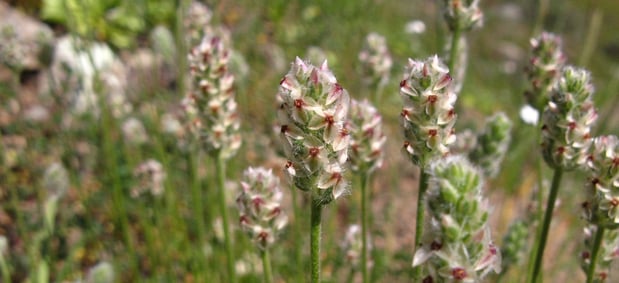
What do Bay checkerspots eat?
Bay checkerspots eat different plants at different stages of their life cycle. In their larval stage, as caterpillars, their primary food source is their host plant, the dwarf plantain (Plantego erecta). The caterpillars eat the small leafy parts at the base of the plant before curling up to take a nap in the sun (what scientists call thermoregulation).
Bay checkerspot thermoregulation happens in the mornings and evenings, which is one reason why Máyyan ‘Ooyákma – Coyote Ridge Open Space Preserve has shortened hours during the Bay Checkerspot Butterfly mating season. It gives the caterpillars time to rest and restore their energy to prepare for the process of becoming a butterfly without the risk of being trampled.If trampled. If there are not enough dwarf plantains for them to eat, then purple owl’s clover (Castilleja exserta) or exserted paintbrush (Castilleja densiflora) serve as secondary host plants.
As butterflies, Bay checkerspots feed on the nectar of several wildflowers found in serpentine habitats. Some of their favorites include tidy tips (Layia platyglossa), California goldfields (Lasthenia californica) and fiddlenecks (Amsinckia intermedia). If you are hoping to spot a Bay checkerspot, be sure to look out for them near these flowers!
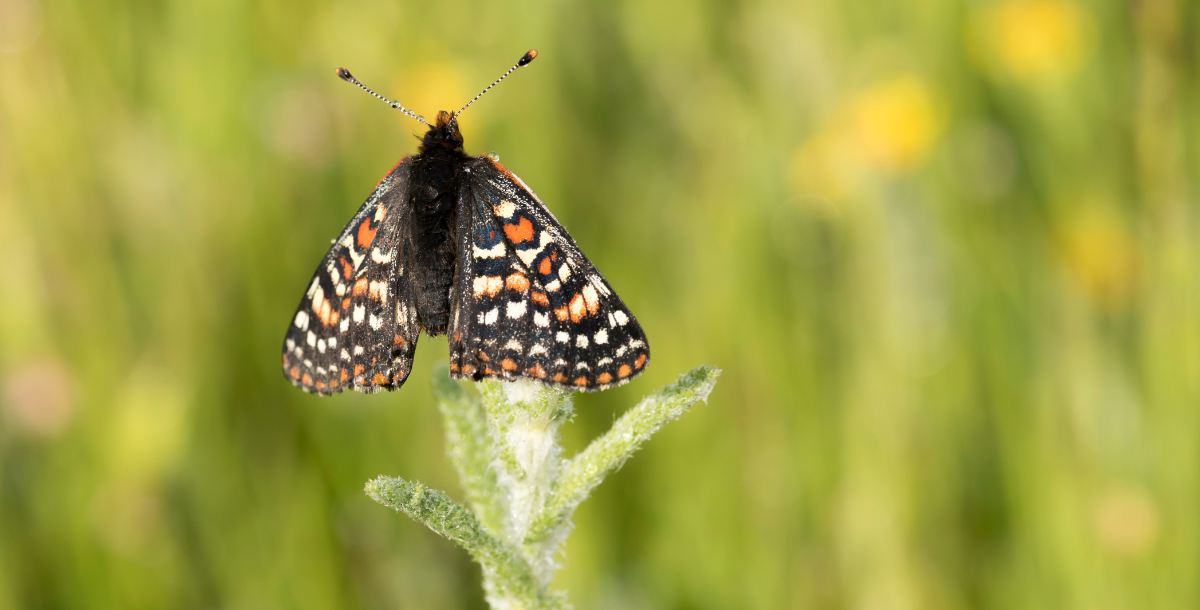
What are we doing to protect the Bay checkerspot?
According to Dr. Stu Weiss, who has spent decades studying the Bay checkerspot populations at Máyyan ‘Ooyákma – Coyote Ridge, “The key to having a Bay checkerspot population is to have the right host plants, which is caterpillar food.” You can learn more about what Dr. Weiss has to say about the Bay checkerspot and Máyyan ‘Ooyákma – Coyote Ridge by watching this video.
Protecting the Bay checkerspot and the wildflowers (its food) is one of the reasons we have limited the visiting hours at Máyyan ‘Ooyákma – Coyote Ridge. The limited hours give nature time to be nature without interruptions, and the Butterfly Pass system reminds visitors how important it is to stay on trail and not trample the wildflowers, butterflies or caterpillars. By staying on designated trails, leaving no trace and refraining from picking any plants or disturbing wildlife, YOU can help us protect this rare species.
Photos: 1- C. Hutnik, 2 - D. Mauk, 3- D. Neumann, 4 - C. Hutnik, 5 - D. Neumann
